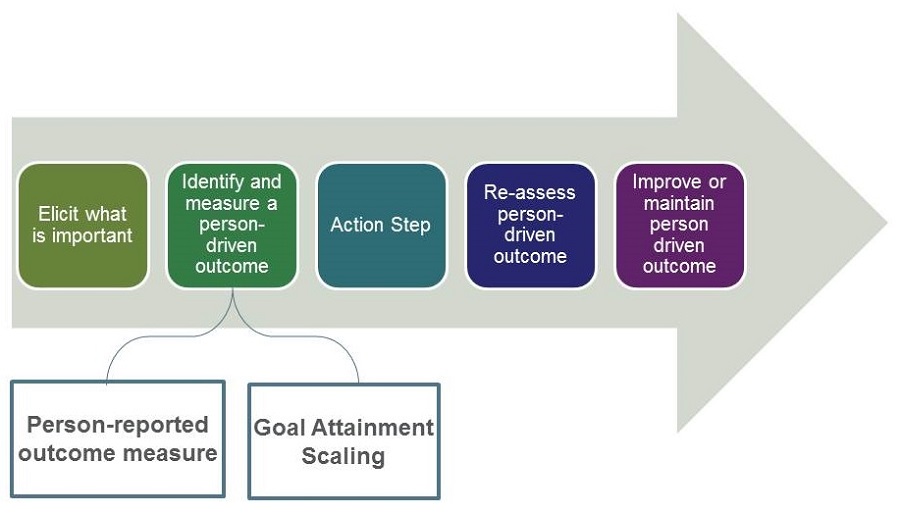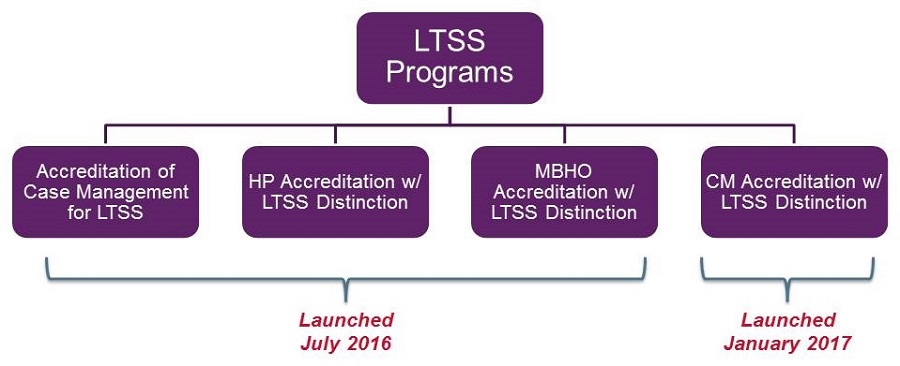Monday, April 29, 2019
Printer Friendly Version in PDF Format ( PDF pages)
Accountability for Person-Centered Care Planning: Performance Measurement and Accreditation
Jessica Briefer French, Assistant Vice President, Research
National Committee for Quality Assurance
This work is supported by a grant from The SCAN Foundation and The John A. Hartford Foundation
Quality Measurement: One Size Does Not Fit All
What Matters Most?
- Sample of goals from focus groups with disabled older adults and their caregivers
- Stay out of the hospital
- Manage physical symptoms (e.g., Control pain)
- Practice religion and spirituality
- Have legal and financial affairs in order
- Have more free time for caregiver
- Not be a burden on family
- Maintain or regain independence
- Return to home setting
- Some goals were unexpected
- Practice religion and spirituality
- Have more free time for caregiver
- Not be a burden on family
- Maintain or regain independence
Our Vision: Person-Driven Outcomes
- Person-Driven Outcomes
- Outcomes identified by the individual (or caregiver) as important that can be used for care planning and quality measurement
Person-Driven Outcome Approach and Quality Measures
| Person-Driven Outcome Measures Demonstration |
|---|
 |
Pilot and Demonstration Project
Why do we think this will work?
- Agencies
- iCare
- Care Source
- University of California San Francisco
- UCLA Health
- U.S. Medical Management
- Kaiser Permanente
- Priority Health
- Community HEalth Plan of Washington
- MedStar Good Samaritan Hospital
- Pilot Findings
- Approach was feasible and added value to care planning
- Adds on average 20 min to an encounter
- Potentially increased patient activation
- Providers felt it fit well within their current practice
- Feasible metric for showing improvement in outcomes
- Research outcomes
- Patient activation
- Well-being
- Shared-decision making
- Experience of care
- Caregiver strain
- Hospitalization
- Emergency department
- Skilled nursing facility
Demonstration Objectives
- Future of Quality Measurement
- % of individuals with a goal and plan of care
- % of individuals with follow-up on goal
- % of individuals who achieve goal
HEDIS® 2019: Technical Specifications for Long-Term Services and Supports Measures
- Long-Term Services and Supports Comprehensive Assessment and Update (LTSS-CAU)
- Long-Term Services and Supports Comprehensive Care Plan and Update (LTSS-CPU)
- Long-Term Services and Supports Shared Care Plan with Primary Care Practitioner (LTSS-SCP)
- Long-Term Services and Supports Re-Assessment/Care Plan Update After Inpatient Discharge (LTSS-RAC)
- Available at: http://store.ncqa.org/index.php/catalog/product/view/id/3419/s/hedis-2019-technical-specifications-for-ltss-organizations-epub/
LTSS Comprehensive Care Plan and Update
- Numerator Rate 1
- Members who had a comprehensive LTSS care plan completed during calendar year 2018 (within 120 days of enrollment for new members), with 9 core elements documented.
- Rate 1: Core Elements
- Member goal
- Plan for medical needs
- Plan for functional needs
- Plan for cognitive needs
- List of all LTSS services
- Follow-up & communication plan
- Emergency need plan
- Caregiver involvement
- Member agreement to plan
NCQA's LTSS Accreditation Programs
 |
| HP = Health Plan MBHO = Managed Behavioral Healthcare Organization |
Program Requirements at a Glance
- CM-LTSS Accreditation Standards
- LTSS 1: Program Description
- LTSS 2: Assessment Process
- LTSS 3: Person-Centered Care Planning and Monitoring
- LTSS 4: Care Transitions
- LTSS 5: Measurement & Quality Improvement
- LTSS 6: Staffing, Training and Verification
- LTSS 7: Rights and Responsibilities
- LTSS 8: Delegation
- LTSS 3: Person-Centered Care Planning
- Coordinate person-centered services for individuals by developing of individualized case management plans and monitoring progress against the plans.
- Element A - Person-Centered Assessments
- The organization has a process to:
- Assess individuals' prioritized goals. *
- Assess individuals' preferences. *
- Assess individuals' life planning activities.
- Identify individuals' preferred method of communication.
- The organization has a process to:
What is the path forward?
- Focus on what matters
- Build knowledge and confidence
- Build shared accountability
- Make it easy
NCQA
Measuring quality. Improving health care.
